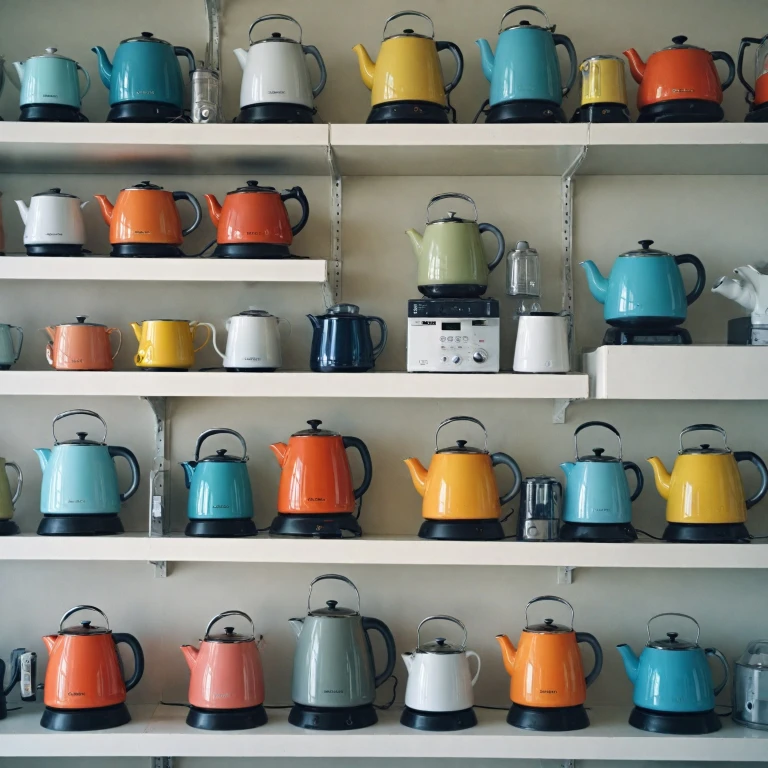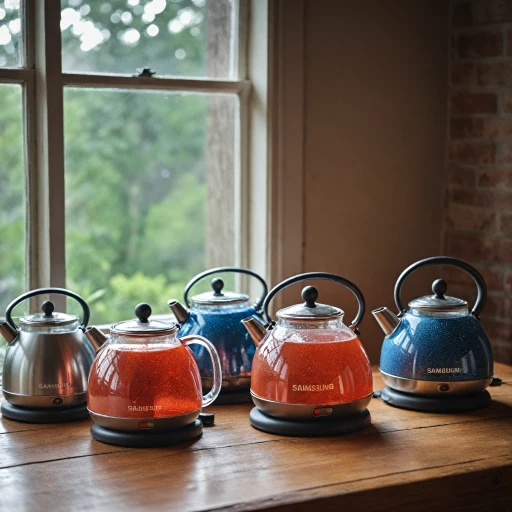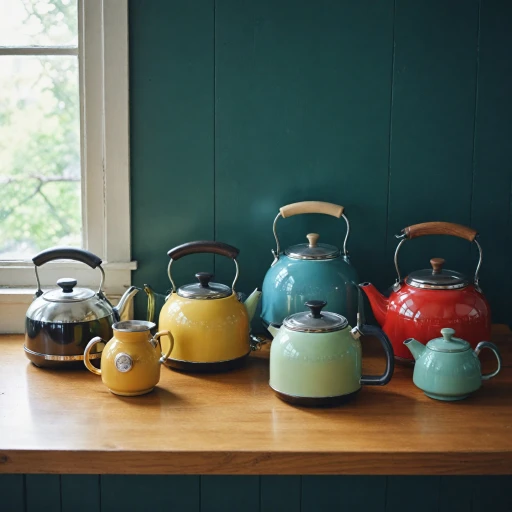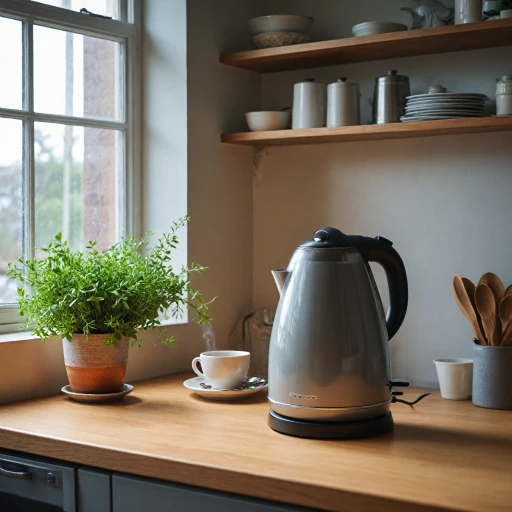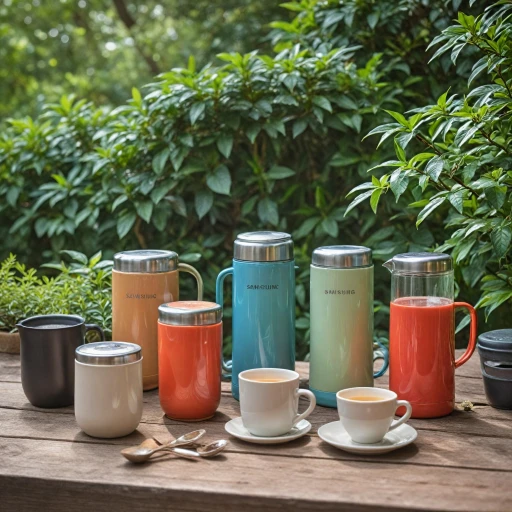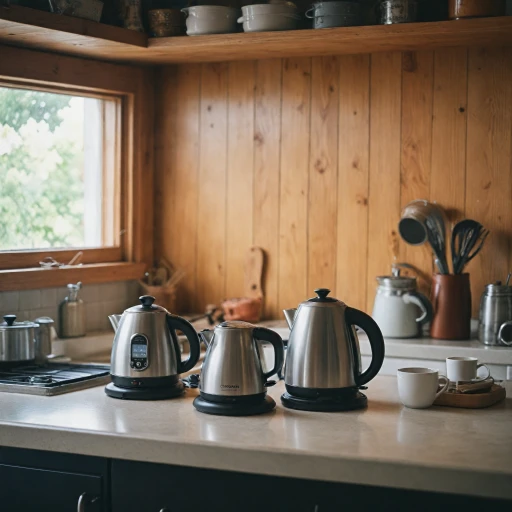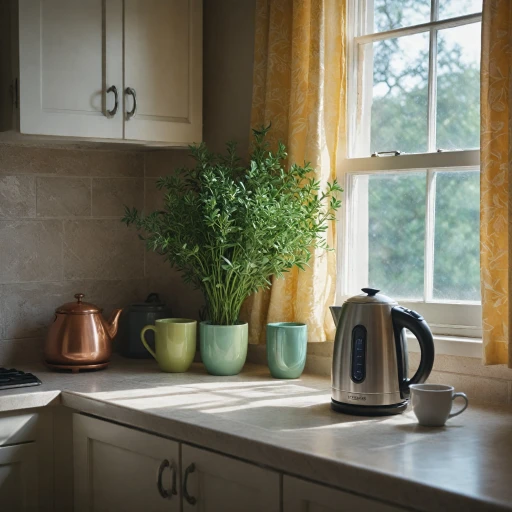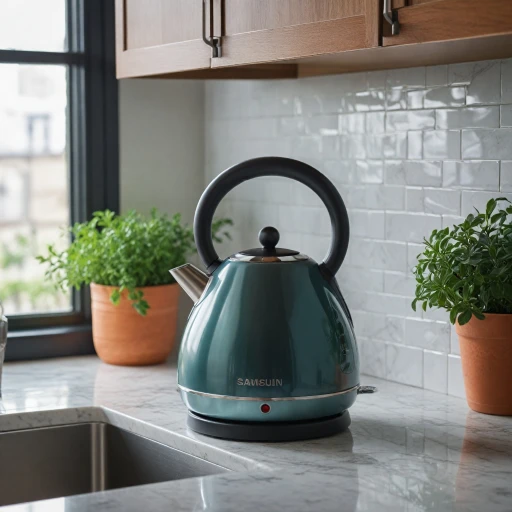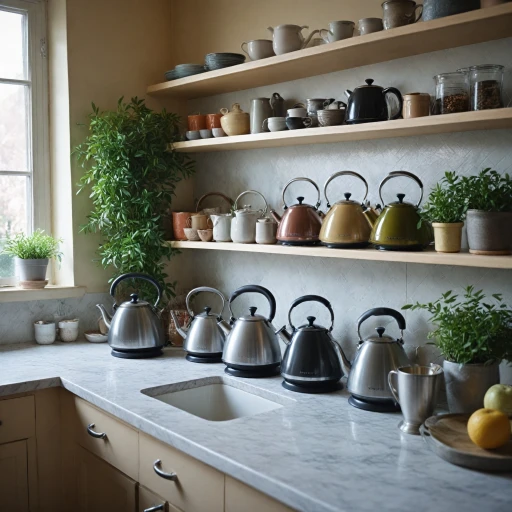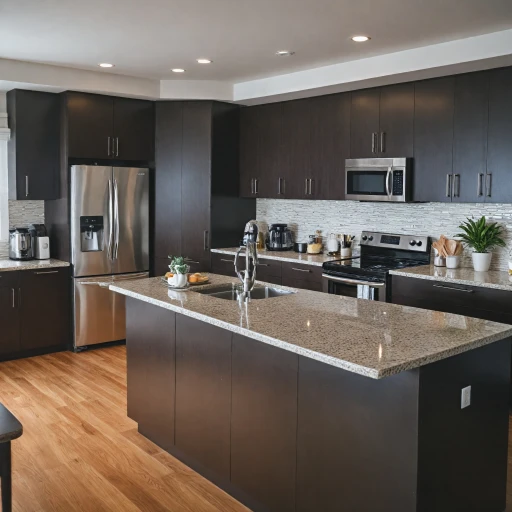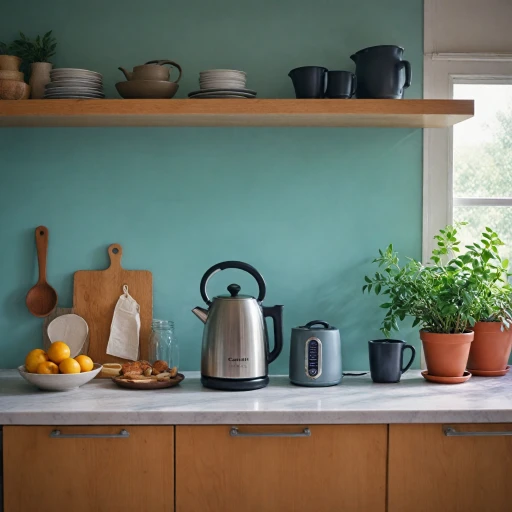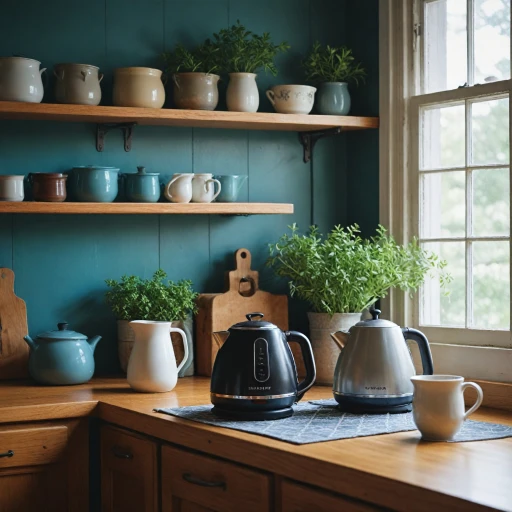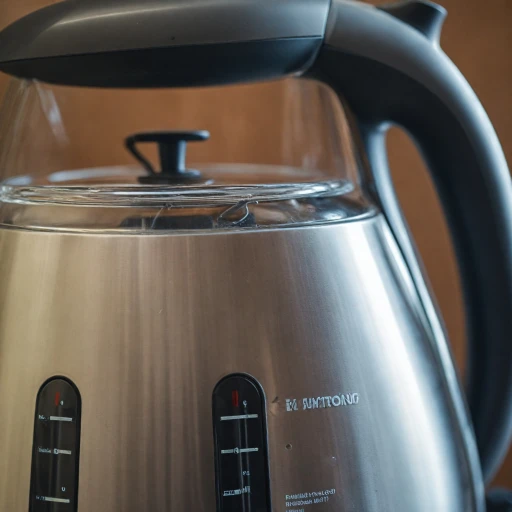
The Basics of Electric Kettle Efficiency
Getting Acquainted with Electric Kettle Efficiency
Electric kettle efficiency is all about how well these appliances use electricity to heat water, converting energy to heat effectively. By understanding efficiency, you can ensure that you're using your electric kettle in a way that conserves both energy and cost. Electric kettles are designed to bring water to a boil quickly, making them convenient for tea, coffee, and other hot beverages. They use an electrical element to heat water, providing faster boiling compared to traditional stovetop kettles. This element is located at the bottom of the kettle and heats water more uniformly, which is beneficial for ensuring quick boil times. Why, you may ask, is efficiency important? A more efficient electric kettle uses less electricity to boil the same amount of water, translating into energy savings and lower energy bills. Issues such as overfilling the kettle, which heats more water than needed, could decrease overall efficiency. On the flip side, filling just enough water needed for your desired volume can maintain both high efficiency and performance. Factors such as the type of material, like stainless steel or glass, as well as built-in features, play a vital role in a kettle's overall energy performance. For example, kettles with variable temperature controls or keep-warm features often provide the added benefit of only heating water to the temperature you need. This not only saves energy but enhances convenience, especially when pouring coffee or making tea. In upcoming sections, you'll find more about specific variables that influence this efficiency, comparisons among different types of electric kettles, and tips to improve the performance of your kettle. This knowledge will help you in making informed decisions about your kitchen appliances, ensuring they align with your energy-saving goals.Factors Affecting Electric Kettle Efficiency
Key Factors Influencing Electric Kettle Efficiency
Electric kettle efficiency can be influenced by several critical factors that can impact how quickly, and with how much energy, water can be boiled. Let's explore these key factors, which can help you make an informed decision when purchasing an electric kettle for tea, coffee, or everyday use.- The Heating Element: The type and quality of the heating element are instrumental in achieving efficient boiling times. Kettles with an efficient element can heat water swiftly, conserving energy in the process. Make sure the kettle you choose has a high-quality heating element that can deliver best-in-class performance.
- Boil Time: The speed at which a kettle can bring water to a boil significantly affects its energy efficiency. Electric kettles generally outperform stovetop models in terms of boil time. A kettle capable of reducing boil time will consume less electricity over repeated use.
- Volume of Water: It's crucial to consider the volume of water you're boiling at once. Smaller amounts typically lead to less waste and higher efficiency. Always fill your electric kettle according to the amount you need rather than its maximum capacity.
- Temperature Control and Keep Warm Functions: Advanced features like variable temperature selection and "keep warm" settings can improve efficiency. Temperature control allows you to heat water to the desired temperature, perfect for varying brewing methods, whether it's tea or a pour-over coffee. However, be mindful of "keep warm" settings that could lead to unnecessary power usage if used excessively.
- Kettle Material: The material from which the kettle is made, such as stainless steel or glass, can also impact efficiency. Materials that retain heat better can maintain water temperature longer, reducing the need for repeat boiling.
Comparing Different Types of Electric Kettles
Electric Kettles at a Glance
The landscape of electric kettles is vast, with various styles and functionalities that cater to diverse needs. Choosing the right type can significantly impact your boiling efficiency, and there's more to consider than meets the eye. First, let's talk about traditional electric kettles. These are the standard models with a single power setting. They efficiently boil water and are usually equipped with an automatic shut-off feature for safety, ensuring the water doesn't over-boil. Then there are variable temperature kettles, ideal for more precision. If you're a tea enthusiast or a coffee aficionado, having control over the boiling temperature can enhance the flavor of your brew. With this type, you can heat water to the perfect warmth for delicate green teas or scorching hot for a robust coffee. A gooseneck kettle might be your choice if pour-over coffee is your style. This type offers precision and control with its slender spout, perfect for pouring with accuracy, a key to achieving that flavorful cup. In terms of material, glass kettles provide a modern look and allow you to watch the boiling water process, though they might require more care. Stainless steel options tend to be durable and energy efficient due to their better heat retention. For those who seek to minimize energy usage, certain electric kettles come with an insulated bottom kettle design, maintaining the heat longer and reducing the need for frequent reheating. If you’re interested in learning about energy-saving features specific to a popular brand, visit this comprehensive guide on electric kettles. The options are numerous, but with careful consideration, you can select an electric kettle that best matches your lifestyle, ensuring it balances performance with energy efficiency.Energy-Saving Features to Look For
Energy-Saving Features Worth Considering
When choosing an electric kettle, focusing on energy-saving features can significantly enhance the efficiency of boiling water while reducing electricity consumption. Here’s what to consider:- Variable Temperature Settings: Not all beverages require boiling water at the same temperature. Tea enthusiasts might prefer a lower temperature, while coffee lovers might look for that boiling point. Electric kettles with variable temperature controls let you heat water to the precise temperature needed, avoiding unnecessary energy usage and ensuring perfect brews.
- Quick Boil Function: Some kettles are designed with a rapid boil function, which increases the power input momentarily to reduce the boil time. This feature not only saves time but also minimizes energy consumption by quickly reaching the desired temperature.
- Insulation and Keep Warm Features: Electric kettles with good insulation require less energy to maintain hot water. The keep-warm function keeps the water at a set temperature using minimal energy, making it efficient for those who frequently pour tea or coffee throughout the day.
- Auto Shut-Off: An often overlooked feature, the auto shut-off ensures that the kettle turns off immediately after boiling. This safety feature not only prevents overheating but also reduces wasted electricity from a heating element working overtime.
- Low Fill Capacity: The amount of water you boil impacts efficiency. Kettles with clear volume markers encourage users to heat only the necessary amount of water each time, conserving energy.
Impact of Electric Kettle Efficiency on Energy Bills
Understanding the Connection Between Efficiency and Energy Bills
When evaluating electric kettles, efficiency is paramount. A highly efficient kettle not only heats water quickly but also contributes significantly to reducing energy consumption, impacting your electricity bills positively. The key is in how the kettle's heating element converts electricity into heat, shortening the boil time and ensuring minimal energy is wasted.
Using an energy efficient kettle means that less electricity is required to heat the same volume of water, compared to less efficient models. This efficiency can lead to noticeable savings on your energy bills over time, particularly if you frequently make use of your electric kettle.
Another factor to consider is temperature control. Kettles with variable temperature settings allow you to choose the exact temperature at which the water is heated. For tea or coffee enthusiasts, this means not overheating water, which not only preserves the quality of the beverage but also saves money by using less energy.
Additionally, features like keep warm functions can influence your energy spending. While convenient, these features consume additional power to maintain water temperature. Hence, using them judiciously is advised to avoid unnecessary energy usage.
The efficiency of electric kettles compared to traditional stovetop models can also be seen in their quicker heat times and better insulation, leading to less heat loss. Ultimately, choosing a kettle with the best efficiency characteristics will result in both lower boil time and reduced overall electricity usage.
Tips for Maximizing Your Electric Kettle's Efficiency
Maximizing Efficiency in Your Electric Kettle
Using an electric kettle efficiently not only helps in reducing energy consumption but also ensures that your kettle lasts longer. Here are some tips that can help you use your electric kettle most efficiently:- Proper Water Volume: Always measure the amount of water you need. A large volume of water takes more time and energy to boil. For tea or coffee, filling the kettle water just to the level you require is more energy efficient.
- Regular Descaling: Over time, lime scale can build up around the heating element, making it harder for the kettle to heat water efficiently. Regularly descale your kettle to maintain its efficiency.
- Temperature Control Feature: Using a kettle with variable temperature settings can be beneficial. It allows you to heat water to the perfect temperature for green tea or coffee. This precision avoids the higher energy usage of boiling water unnecessarily.
- Turn Off Keep Warm Feature: While convenient, the keep warm function draws continuous power to maintain hot water. If you're not using it immediately, turn it off to conserve electricity.
- Use Efficient Kettles: When water needs to be heated rapidly, choosing a kettle with a powerful heating element helps. However, balance power with design, as a gooseneck kettle may offer better pouring precision for coffee.
- Switch Off Unnecessarily: It's a simple habit, but ensuring the kettle is turned off after use can prevent unnecessary electricity consumption. Put appliances like kettles and microwaves completely off when not in use.

